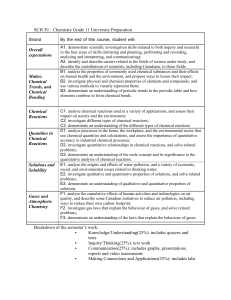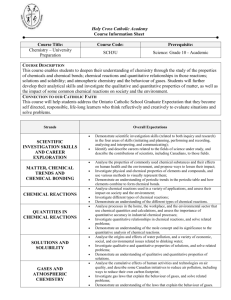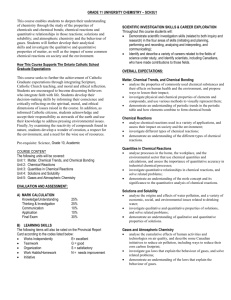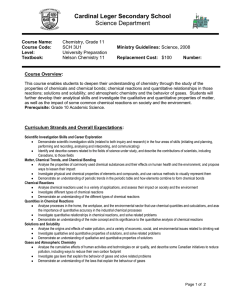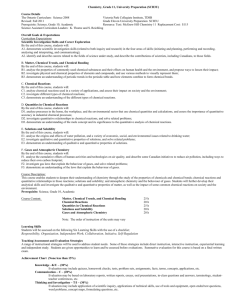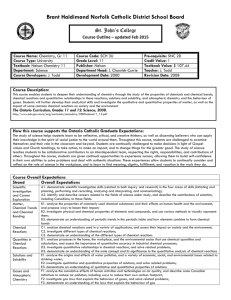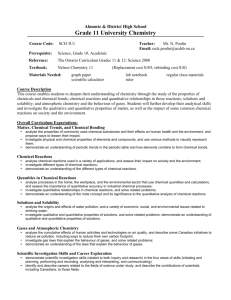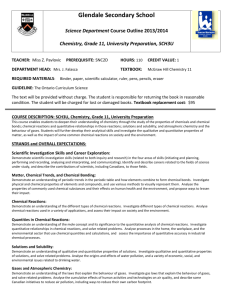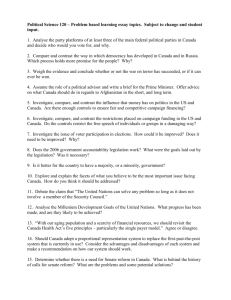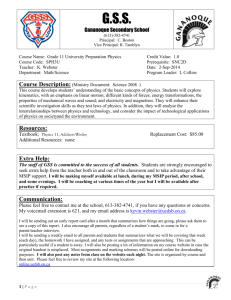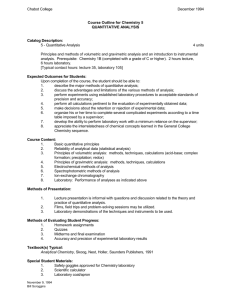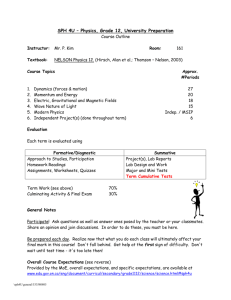CTS-SCH3U Course Outline
advertisement
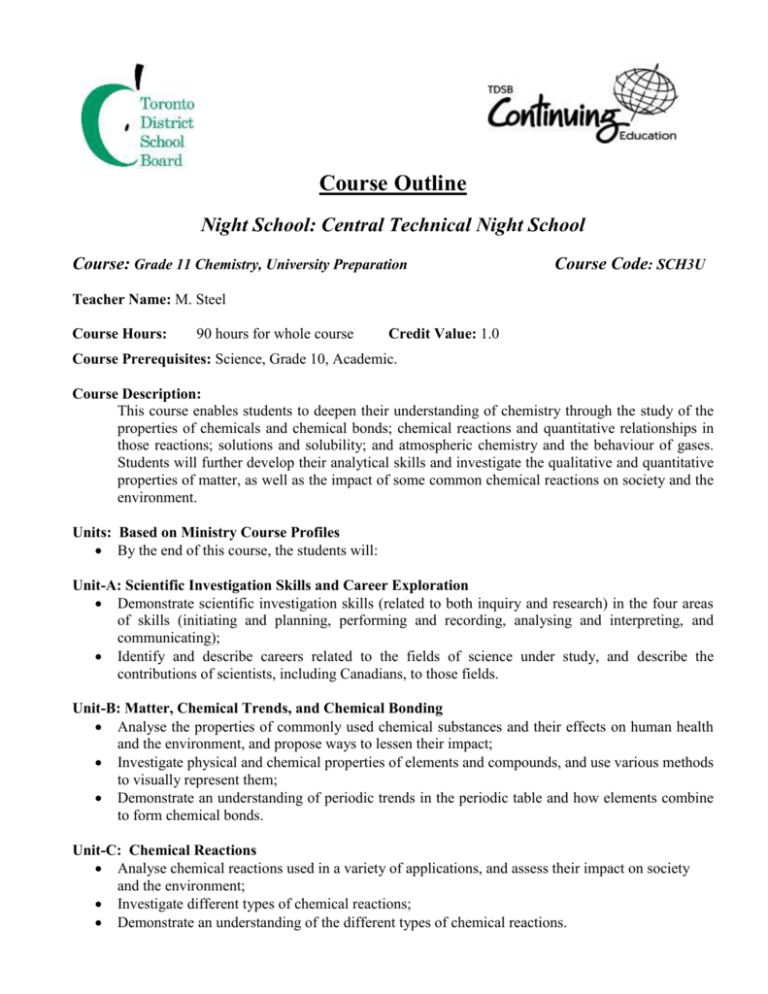
Course Outline Night School: Central Technical Night School Course: Grade 11 Chemistry, University Preparation Course Code: SCH3U Teacher Name: M. Steel Course Hours: 90 hours for whole course Credit Value: 1.0 Course Prerequisites: Science, Grade 10, Academic. Course Description: This course enables students to deepen their understanding of chemistry through the study of the properties of chemicals and chemical bonds; chemical reactions and quantitative relationships in those reactions; solutions and solubility; and atmospheric chemistry and the behaviour of gases. Students will further develop their analytical skills and investigate the qualitative and quantitative properties of matter, as well as the impact of some common chemical reactions on society and the environment. Units: Based on Ministry Course Profiles By the end of this course, the students will: Unit-A: Scientific Investigation Skills and Career Exploration Demonstrate scientific investigation skills (related to both inquiry and research) in the four areas of skills (initiating and planning, performing and recording, analysing and interpreting, and communicating); Identify and describe careers related to the fields of science under study, and describe the contributions of scientists, including Canadians, to those fields. Unit-B: Matter, Chemical Trends, and Chemical Bonding Analyse the properties of commonly used chemical substances and their effects on human health and the environment, and propose ways to lessen their impact; Investigate physical and chemical properties of elements and compounds, and use various methods to visually represent them; Demonstrate an understanding of periodic trends in the periodic table and how elements combine to form chemical bonds. Unit-C: Chemical Reactions Analyse chemical reactions used in a variety of applications, and assess their impact on society and the environment; Investigate different types of chemical reactions; Demonstrate an understanding of the different types of chemical reactions. Unit-D: Quantities in Chemical Reactions Analyse processes in the home, the workplace, and the environmental sector that use chemical quantities and calculations, and assess the importance of quantitative accuracy in industrial chemical processes; Investigate quantitative relationships in chemical reactions, and solve related problems; Demonstrate an understanding of the mole concept and its significance to the quantitative analysis of chemical reactions Unit-E: Solutions and Solubility Analyse the origins and effects of water pollution, and a variety of economic, social, and environmental issues related to drinking water; Investigate qualitative and quantitative properties of solutions, and solve related problems; Demonstrate an understanding of qualitative and quantitative properties of solutions. Unit-F: Gases and Atmospheric Chemistry Analyse the cumulative effects of human activities and technologies on air quality, and describe some Canadian initiatives to reduce air pollution, including ways to reduce their own carbon footprint; Investigate gas laws that explain the behaviour of gases, and solve related problems; Demonstrate an understanding of the laws that explain the behaviour of gases. Assessment and Evaluation: Term Work: Knowledge / Understanding: Thinking / Inquiry: Communication: Application: 70% 20% 20% 15% 15% [Term Work includes tests, presentations, reports, ISU etc within each area/category] Final Evaluation: Culminating Activity Final Examination 30% 10% 20% Plagiarism: Any student that plagiarizes submitted work or allows their submitted work to be copied will receive a mark of zero for that activity. Attendance is crucial for all classes as the night school course is 20 hours less than the day school course. After 3 absences a student will be demitted – this is the policy of the continuing education department of the TDSB. Textbook: McGraw-Hill Chemistry 11
